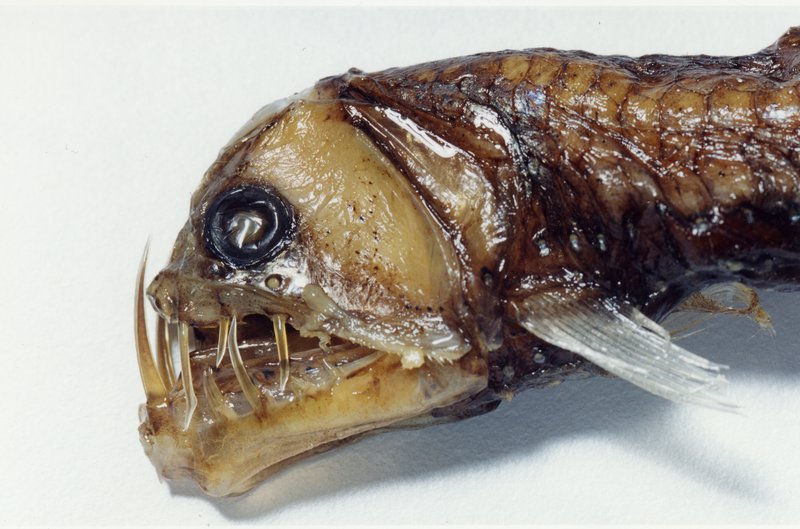Sloane's Viperfish, Chauliodus sloani Bloch & Schneider, 1801
Introduction
Sloane's Viperfish is one of the most recognizable deep sea fishes with its long fang-like teeth and photophores illuminating the side of its body.

© NORFANZ Founding Parties
Identification
The species can be recognised by its large mouth, long fang-like teeth and long first dorsal fin ray (up to half the body length). It is an iridescent dark silver-blue colour in life with pale fins. The sides of the body are covered with hexagonal pigmented areas, each with one or more small photophores.
Habitat
Like many other species of deepsea fishes, Sloane's Viperfish is known to vertically migrate. During the day it is found at depths from 500 m to 2500 m, but at night it swims up into shallower water (less than 600 m) where food is more plentiful.
Distribution
The species occurs in tropical and temperate marine waters world-wide. In Australia, specimens have been collected from south-western Western Australia, around the north of the country and south to Tasmania.
The map below shows the Australian distribution of the species based on public sightings and specimens in Australian Museums. Click on the map for detailed information. Source: Atlas of Living Australia.
Feeding and diet
It feeds mostly on crustaceans and small fishes. The first dorsal fin has photophores that are believed to attract prey.
Breeding behaviours
Little is known of the reproduction of this species, but it is believed to spawn externally. This means that the males and females release sperm and eggs into the water where fertilization occurs.
References
- Gomon, M.F & E.M. Robertson. in Gomon, M.F, C.J.M. Glover & R.H. Kuiter (Eds). 1994. The Fishes of Australia's South Coast. State Print, Adelaide. Pp. 992.
- Harold, A.S. 1999. Chauliodontidae. In Carpenter, K.E. & V.H. Niem (Eds). FAO Species Identification Guide for Fishery Purposes. The Living Marine Resources of the Western Central Pacific. Volume 3. Batoid fishes, chimaeras and bony fishes part 1 (Elopidae to Linophrynidae). FAO, Rome. Pp. iii-vi, 1398-2068.
- McCulloch, A.R. 1916. Report on some fishes obtained by the F.I.S. Endeavour on the coasts of Queensland, New South Wales, Victoria, Tasmania, South and South-Western Australia. Part 4. Biol. Res. Endeavour 4(4):169-199 figs 1-2, pls 49-58 [179 pl 52].





